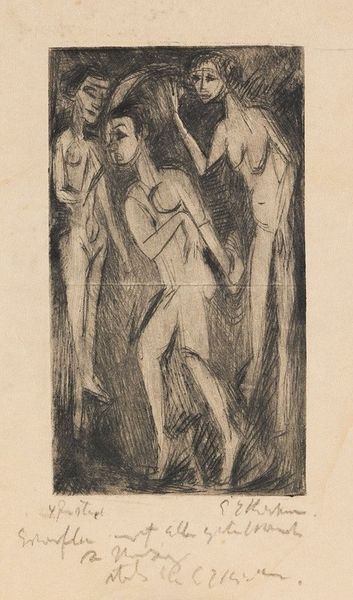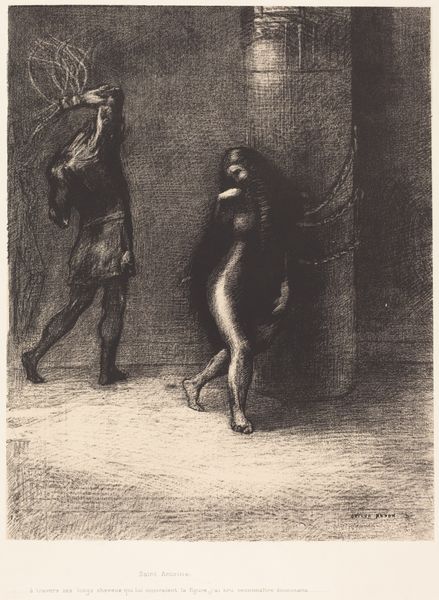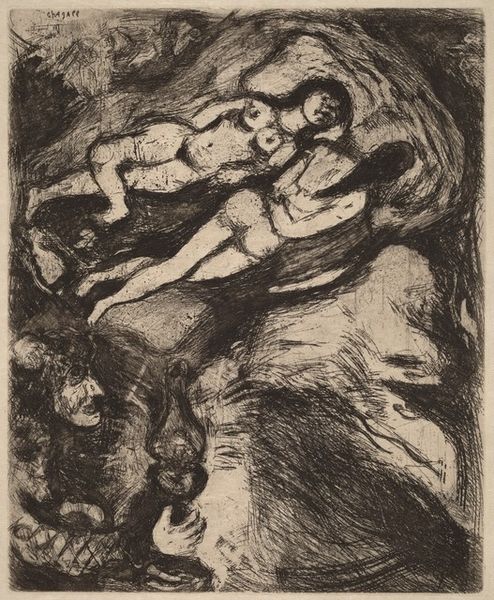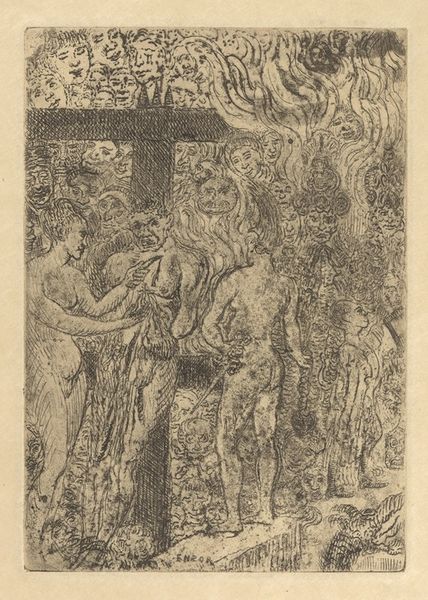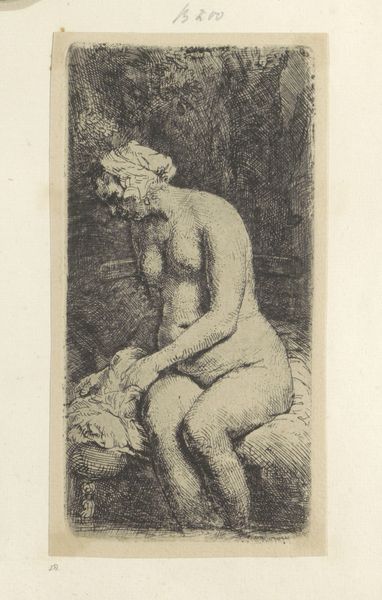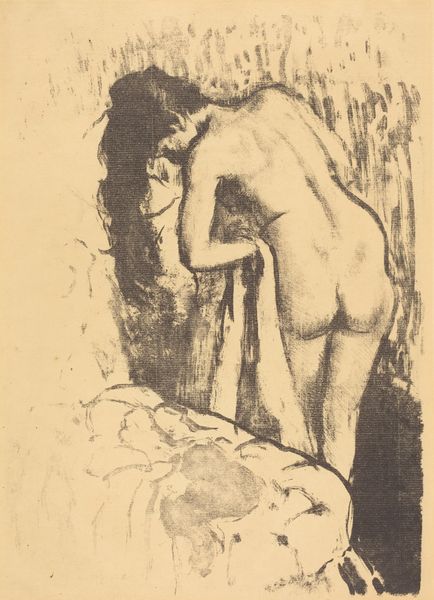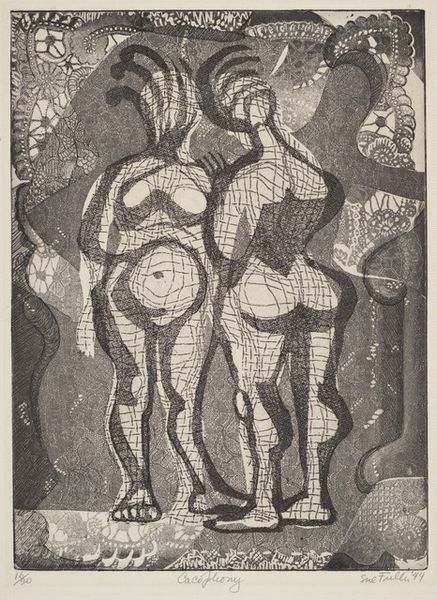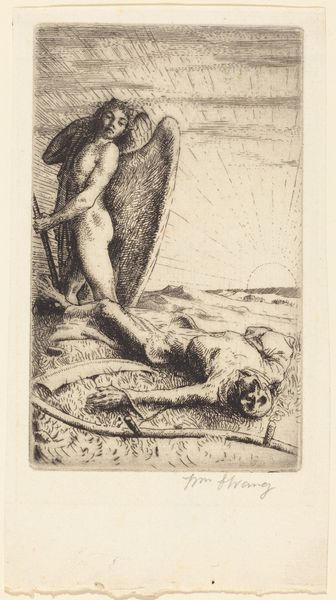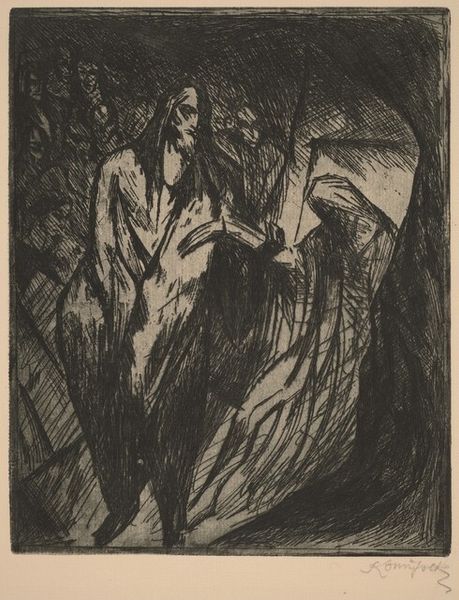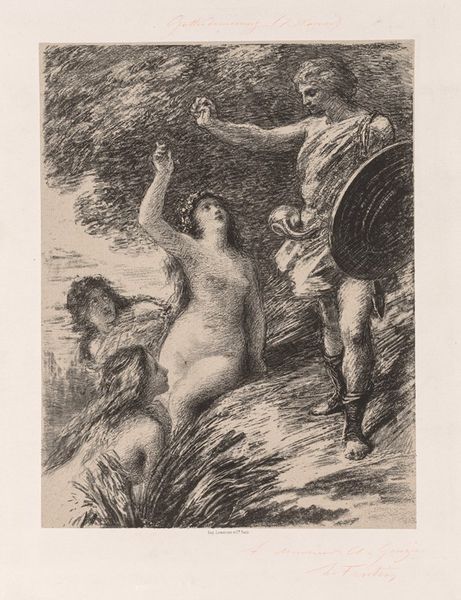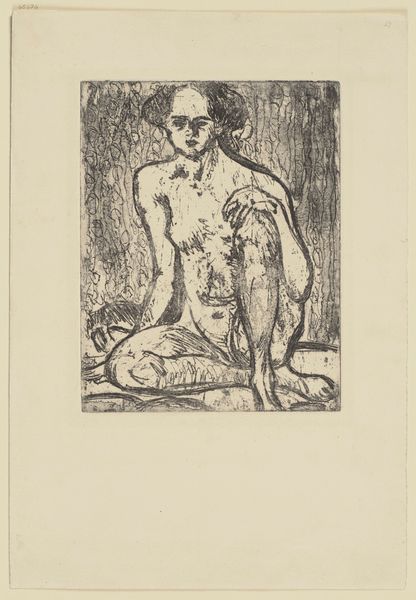
Two Women Gazing at a Nude Model (Deux femmes regardent un modèle nu) 1923
0:00
0:00
print, etching
#
portrait
#
cubism
# print
#
etching
#
figuration
#
nude
Dimensions: plate: 17.8 x 12.9 cm (7 x 5 1/16 in.) sheet: 40 x 29.9 cm (15 3/4 x 11 3/4 in.)
Copyright: National Gallery of Art: CC0 1.0
Curator: Well, the print before us is entitled *Two Women Gazing at a Nude Model*, etched by Pablo Picasso in 1923. Editor: There’s an arresting rawness here. I immediately note the granular texture, almost like sandpaper, which adds a distinct weight to the figures, preventing them from merely existing as lines on paper. Curator: Precisely. Picasso's adept use of the etching technique is noteworthy; the density of the lines dictates form, modeling volume. What can you discern from its construction regarding the process? Editor: The heavy use of cross-hatching speaks to the labour invested in building up the shadows, particularly on the figures in the background. The tonal gradations suggest multiple passes with the etching needle. There’s a palpable sense of craft, challenging notions that printmaking is purely reproductive rather than creatively additive. Curator: I am interested in the gaze depicted. The seated women contemplate the standing nude model. The line becomes an instrument for expressing subjective viewpoints—Picasso's interrogation of the act of observation itself. What does that production process mean for our consumption of it? Editor: It positions us, the viewers, as yet another layer in that chain of observation. Etching allows for multiples, democratization perhaps, but the labour involved—the physical act of cutting into the plate—still implies value beyond simple reproduction. And the relative small edition size for such prints meant for an elite class. It begs the question: what labor underpinned that leisure to observe? Curator: An important socio-economic query. But look at how Picasso renders space; the flattening effect challenges traditional perspective, which emphasizes semiotic representation of objects and bodies through geometric forms. Editor: It resists the smooth perfection that the bourgeois consumer would crave in academic art. There’s a grit here, born of physical making. It isn't just an image—it’s an object testifying to the act of its creation, its messy birth. Curator: A compelling testament indeed. We see the interplay of gaze and facture inseparably interwoven. Editor: An art born not just of mind but of the body. It gives us so much more to see.
Comments
No comments
Be the first to comment and join the conversation on the ultimate creative platform.
